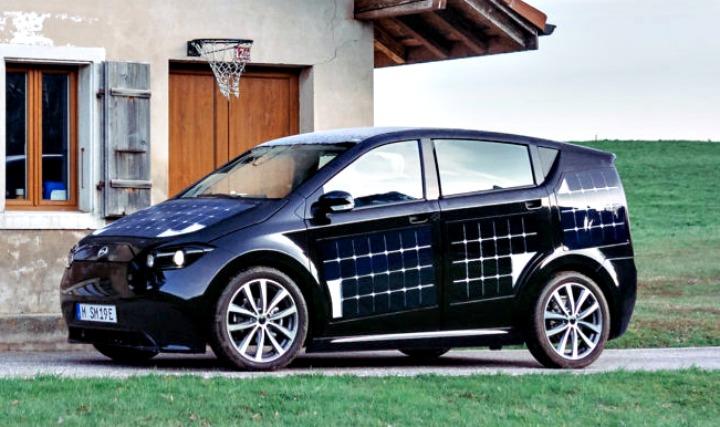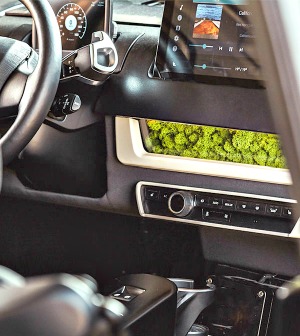New Electric Cars Solar-Powered for 500 Miles

Electric motors are factoring into vehicle propulsion in varying degrees, ranging from all-electric to mild-hybrid assist. All contribute to operation-cost savings and lower emissions. Benefits of electric power will be pushed to a higher level during the next couple of years by new car companies using solar energy.
Sono Motors, headquartered in Germany, and the Netherlands-based Lightyear are building cars capable of driving on the power of the sun and not needing charging for months. Sono Motors is taking reservations for its Sion small hatchback, which will be available in 2019, and Lightyear plans to sell its Lightyear One luxury sedan in 2020. Lightyear is grabbing consumer attention with reports its vehicle has a range of about 500 miles and Sono Motors posts a range of approximately 155 miles for Sion.
Both companies’ focus is on helping the planet. Sono Motors states: “Our most important goal is to protect the environment. The biggest challenge is to significantly reduce the misuse of valuable and finite resources such as oil.” Lightyear’s mission is “providing clean and affordable mobility for everyone.” Lightyear also says it has “a very strong drive to accelerate the introduction of electric cars around the globe.”

While global sales are part of both companies’ vision, a focus on the European market is the first step. Sono Motors has scheduled Sion test-drive stops throughout Europe. It’s available for preorder at around $18,600 without the battery, which can be rented, leased or purchased for about $4,600.
How to buy a solar-powered vehicle
Reservations for purchasing a Sion are possible for U.S. consumers and in other countries outside of Europe, a Sono Motors spokesman says. “Test drives will take place at our own discretion,” he says. “Due to the fact that we are focusing on the European market first, you have to inform yourself about the transfer of our Sion to the U.S. You also need to get a registration for our Sion in the U.S.”
Lightyear is taking reservations for its Lightyear One at a roughly $139,000 starting price. Availability for the first vehicles in production is limited to Europe. The company forecasts it will sell 1,000 units per year in 2020, 50,000 units yearly in 2025 and mass market vehicles at about 100,000 units per year in 2030-35.
The Sion is a subcompact hatchback, measuring just under 162 inches long – a size comparable to a Honda Fit. It’s produced by a well-known European contract manufacturer whose name will be released soon. The body is mainly constructed of lightweight, rust-proof and scratch-resistant polycarbonate. Most distinctive is the integration of solar cells in the body. Located on the roof, sides, hood and rear, the 330 cells are visible through a protective polycarbonate coat.
The interior is simply laid out with the instrument panel housing the infotainment system’s 10-inch display screen and single gauge that indicates speed and battery charging level. A display to the right provides the total remaining range.
The dashboard incorporates a narrow glass window with green clusters of moss behind it. This “special moss” filters up to 20 percent of the fine dust particles and helps regulate interior humidity. The moss requires no water or special maintenance.
“Under proper conditions the solar cells generate enough energy to cover 30 kilometers (about 18.5 miles) per day with the Sion,” states Sono Motors. The Sion’s battery also can be charged externally. Along with generating energy, the Sion converts into a mobile power station. Using a household plug, it can power small electronic devices. Propelled by a three-phase asynchronous motor mated with a single-speed transmission, Sion can achieve a speed up to about 87 miles per hour.
Can a solar car be luxurious?
Lightyear hasn’t released many details about its Lightyear One “exclusive luxury sedan.” Shadowy teaser images show a sleek form with a long roofline that makes a fastback-style slant, which ends at the taillamps. This large roof is the home for integrated solar cells. Lightyear One’s aerodynamic form and use of lightweight materials team with in-wheel motors to reduce energy consumption. The in-wheel motors, driving four independent wheels, don’t have gears. This makes them more efficient.
“The great thing about this car is that we focused on needing only two energy sources. You need either the sun or normal power circuits,” says Lex Hoefsloot, Lightyear CEO/co-founder and world-champion solar-car racer. “And the great thing about these two is that you have them anywhere in the world. We’ve added four-wheel drive and more ground clearance so that you can really drive anywhere.”
Lightyear One has a large battery, allowing the owner to buffer all of the solar energy collected in one week and use it in another week. The battery also can be charged via a charging port.
A bright spot in solar-car future is that pricing should drop significantly, says Hoefsloot. “When you look at a solar car fundamentally, there’s nothing very expensive in a solar car. The batteries are getting cheaper every day and the solar cells are getting more affordable every day.
“The second part is energy. If you compare the energy costs of an electric car to the energy costs of a gasoline car, the difference is immense. And if you realize that solar energy is getting cheaper and cheaper, then the energy costs can come down tenfold.”
